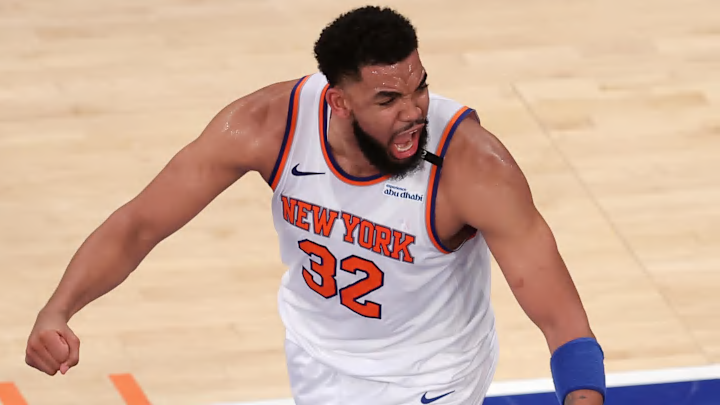Last year’s New York Knicks starting five logged over 225 minutes more than any other lineup in the league. Yet, by season’s end, the group verged on a sham—so much so that Tom Thibodeau, of all people, scrapped them from the record mid-playoff run. Now, this same group is absolutely crushing it.
New York is no longer running out Jalen Brunson, Mikal Bridges, Josh Hart, OG Anunoby, and Karl-Anthony Towns as its starting five. Mike Brown has ditched it in favor of bringing Hart off the bench, and starting Mitchell Robinson whenever he’s healthy enough to do so. Nearly everyone supported making this change.
This is different from junking last year’s starting five altogether. In fact, this quintet is actually the Knicks’ most-played lineup on the season. Not only that, but the group has outscored opponents by a whopping 19 points in just 37 minutes, the equivalent of a 23.2 net rating.
Even if regression awaits, this unit is showing more promise than with which it closed last season. While the lineup was a net plus overall, they finished as a net negative during their minutes after Jan. 1, and were outscored by 31 points in their playoff court time.
Everything seemingly came off the rails. The defense lagged. The offense imploded—particularly in the postseason.
All of which raises an interesting question: Has something changed this year, or is what we’re seeing now a blip on the radar?
The success of the Knicks’ original starting five could be overstated
Noisy returns are part and parcel of opening-season runs. And so far, the grouping of Brunson, Bridges, Hart, Anunoby, and Towns is benefiting from two could-be-temporary factors.
Perhaps most notably, we have not really seen teams defend KAT with a smaller player during this lineup’s time together. That was the Achilles heel by the end of last season. Defenses stuck a big on Hart and let him roam, while Towns struggled to punish smaller mismatches.
At some point, we will see opponents more heavily rely on this strategy. It will be on both Towns and the Knicks to properly adjust. His usage rate plummeted by nearly four points with Hart in the game last year. Though KAT shouldn’t be forcing the action, expecting him to be more than a bystander is hardly unreasonable.
Various degrees of three-point luck are creeping into the equation as well. This fivesome is shooting a combined 44.4 percent from deep (16-of-36), led by an 8-of-10 long-distance clip from Towns. That efficiency isn’t going to stand.
The variance is even larger at the other end. Opponents are shooting just 26.5 percent on treys (9-of-34) against this group. For reference, rival offenses last year converted 37.2 percent of their triples versus the Core Five.
There’s still plenty of reason to believe in this Knicks lineup
We can’t overlook New York’s stylistic shift when projecting forward for the vintage starting five. Mike Brown is emphasizing quicker decision-making, more three-point volume, and above all, a more egalitarian approach to the offense.
The latter adjustment is having the biggest impact for this fivesome. Most notably, Brunson is spending more time away from the ball, and the Knicks are generating more movement away from the rock.
Extra unpredictability makes it harder for defenses to adjust. Especially when Brunson is suddenly a spacing threat off-ball. Helping off him on another player’s drive is a defensive death knell.
Running fewer traditional pick-and-rolls that involve Hart also minimizes the opportunities defenses have to go under screens against him, or sag entirely off him. They have to respect him when he’s eating up space downhill. And KAT is attempting three-pointers more frequently on a per-possession basis in these minutes—another big deal.
It’s much too early to declare this fivesome permanently dominant. In all likelihood, it probably isn’t even the Knicks’ most important lineup. But there is a chance that what became one of the team’s biggest liabilities last year has now become one of its strengths.
